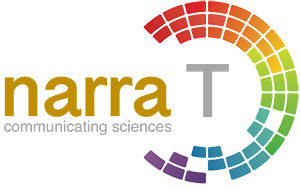Efficacy of N-acetylcysteine and motivational enhancement therapy for nicotine addiction: A randomized clinical trial
DOI:
https://doi.org/10.52225/narra.v5i1.2178Keywords:
Smoking cessation, nicotine addiction, N-acetylcysteine, glutamate-glutamine, motivational enhancement therapyAbstract
N-acetylcysteine (NAC) is known to enhance neuroplasticity and help reduce smoking addiction by modulating brain metabolites. The use of magnetic resonance spectroscopy (MRS) in smokers receiving NAC as an adjuvant to motivational enhancement therapy (MET) represents a novel approach to understanding how this combination therapy influences brain chemistry. By utilizing MRS, the effectiveness of NAC can be quantitatively assessed by analyzing changes in smoking-affected brain metabolites. The aim of this study was to evaluate the efficacy of NAC combined with MET for nicotine addiction, using MRS to assess neurochemical alterations associated with treatment response. A stratified, randomized, parallel-group clinical trial was conducted, comparing NAC and MET combination to MET only among smokers. The study analyzed the effectiveness of NAC by evaluating glutamate-glutamine (Glx) to creatine ratio (Glx/creatine ratio) and N-acetylaspartate (NAA) to creatine ratio (NAA/creatine ratio) in the nucleus accumbens, bilateral cerebellum, medial prefrontal cortex, ventromedial prefrontal cortex, and bilateral precuneus. Our data indicated that the Glx/creatine ratios for the intervention versus control groups were as follows: nucleus accumbens (0.68 vs 0.43), bilateral cerebellum (0.68 vs 0.43), left medial prefrontal cortex (1.11 vs 0.82), ventromedial prefrontal cortex (0.32 vs 0.86), and bilateral precuneus (0.75 vs 0.58). The NAA/creatine ratios for the intervention versus control groups were as follows: nucleus accumbens (3.55 vs 8.35), bilateral cerebellum (7.82 vs 4.02), left medial prefrontal cortex (5.47 vs 5.20), ventromedial prefrontal cortex (3.55 vs 7.46), and bilateral precuneus (4.73 vs 4.00). Our analysis indicated that the Glx/creatine ratio was higher in the intervention group than in the control group in the medial prefrontal cortex (p=0.02), while the NAA/creatine ratio was higher in the intervention group than in the control group in the bilateral cerebellum (p<0.001). The reported side effects were mild to moderate discomfort and well-tolerated across both groups. These findings highlight the potential of NAC and MET combination in promoting neuroplasticity and supporting nicotine addiction treatment.
Downloads
Downloads
How to Cite
Issue
Section
Citations
License
Copyright (c) 2025 Martina WS. Nasrun, Tribowo T. Ginting, Kristiana Siste, Jacub Pandelaki, Aria Kekalih, Melva Louisa, Agus D. Susanto, Diah S. Utami, Immanuel N. Tarigan, Alya R. Trishna, Kelvin Halim

This work is licensed under a Creative Commons Attribution-NonCommercial 4.0 International License.



